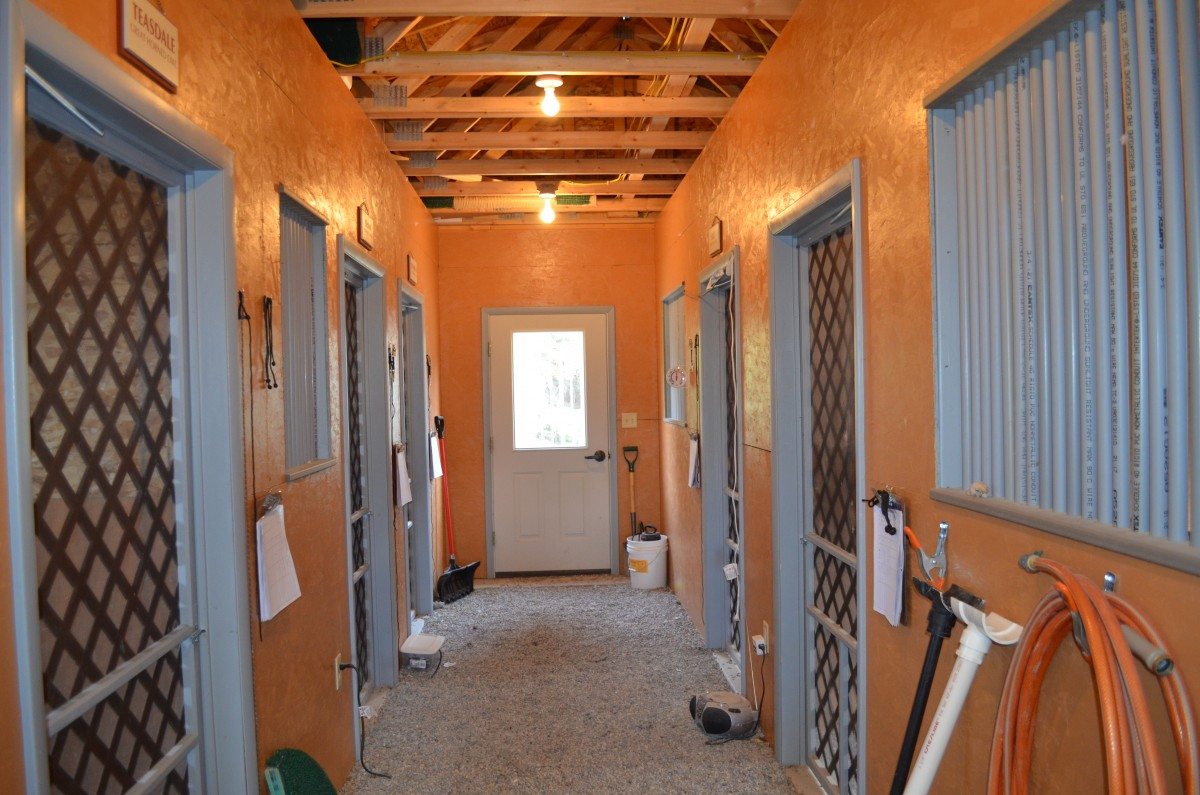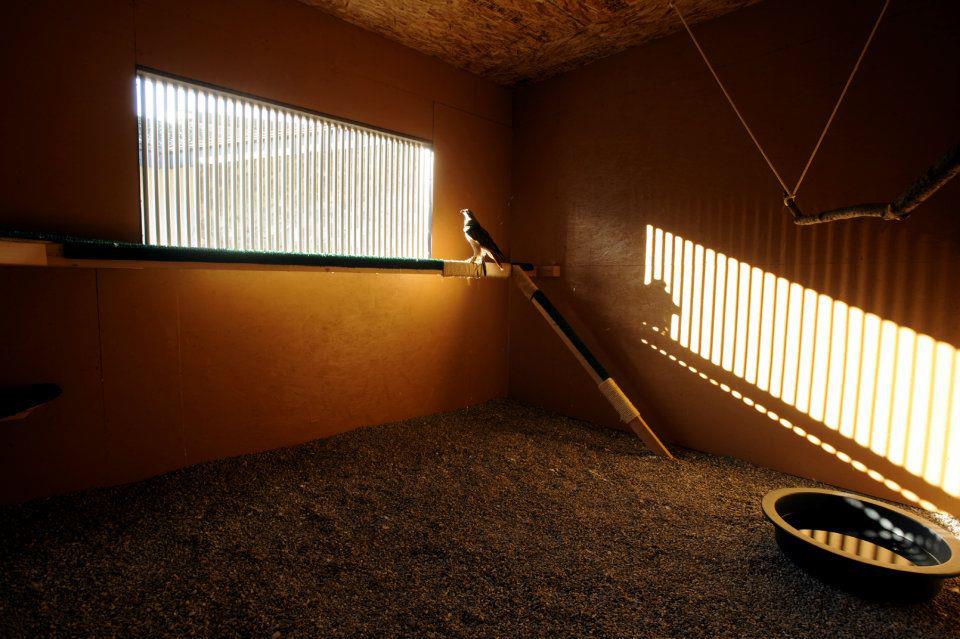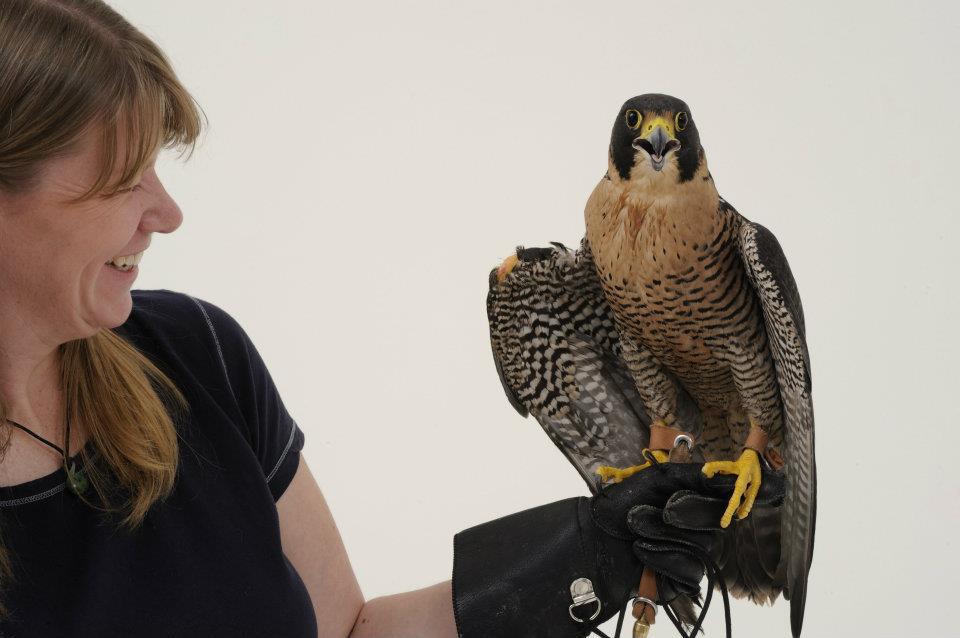It is a crisp April morning here in Cody, Wyoming, and as I did my morning walk-through of the mews to check on the birds I couldn’t help but think of how lucky they are. Yes, how lucky the birds are. Of course I’d rather they were all still in the wild, doing what they were meant to do but since that is no longer an option, I’m glad they are safe and sound with us. I’m not saying that they wouldn’t be safe and sound with another organization, but we truly do spoil our birds. This is obvious the second one enters our mews, especially on a cold morning.
When approaching the building, which is gated off from public areas, I walked through a dusting of snow. Not a big deal, even for a wild bird here in Wyoming. But if you really think about it, the cold temperatures and dusting of snow would require the birds to burn extra energy to stay warm and many raptors are currently sitting on eggs or chicks right now. That means not only needing extra food for themselves, but for each hungry mouth they have to feed as well. And that means burning more energy to obtain the food to provide more energy. Sounds like a vicious cycle, right? That’s nature!
I can’t help but think about those wild birds as I look at the beautiful face of Hayabusa watching me approach from her 3 x 5 foot window. Safely tucked inside her room, she has a full belly, plexiglass covering her normally open-air windows, and a personal heater that kicks on when the room’s temperature drops below 39 degrees. Peregrine falcons rarely survive more than a few years in the wild. If Hayabusa hadn’t been found and taken to a rehabilitation center after she was injured she wouldn’t have lived long. Now, she has daily meals, medical care to help with her disabilities, and mental stimulation to keep her from being bored. Of all our birds, she seems to enjoy the public appearances the most, constantly watching the people and her surroundings (especially when we are outside) simultaneously. I’d say she’s a bit spoiled.
Next I look across at the empty mew for Suli. It’s empty because Suli spends the chilly evenings in her “winter mew” which is 8 x 8 x 9 feet and nestled inside the only part of the building that is heated. Turkey vultures, like peregrine falcons, are migratory and don’t handle cold temps very well, although she’ll make the most of whatever sunlight hits her window. So, when the mercury drops below 35 degrees, Suli moves to the heated area. Although she often protests being in there for too long (there aren’t any windows—a design flaw on my part), when it’s cold she is more than happy to pack up and move indoors. If only the poor wild vultures had that option. Instead, they are huddled together in the pine trees, riding out the spring storms.
The next bird to pass is Isham. Since moving from New Mexico to Wyoming he has really come out of his shell. He started off a bit timid and nervous but always a wonderful bird to work with and great with volunteers and guests alike. The longer he is here, the more comfortable he gets and he has transformed into a completely different bird! Most mornings he greets me with quiet “talk.” as long as he doesn’t think I’m looking :). He has become comfortable enough in his new home that he has recently begun to fly around his room. This was unheard of until this Spring! I am so proud that he has become this comfortable with us—it tells me he is truly happy with his “new” life.
Moving up the hallway I find Teasdale. As usual, he is nestled on his branch perch, right next to his window. In the exact same spot I last saw him the evening before. I don’t worry about the fact that during the day he very rarely moves away from his favorite spot. He’s an owl. That’s what they do. They sit and wait. I do know, however, that he moves around when nobody is there. The evidence below his other perches proves that he is definitely active at night. In addition to the “whitewash” in the other corners of his room, Teasdale leaves a trail of shredded phone book pages strewn across the pea gravel floor. One volunteer has hypothesized that this is his scratch paper for his artwork. She’s convinced he has crayons hidden somewhere and when we’re gone he pulls out the crayons, tears off a piece of scratch paper, and begins to create. When anyone approaches, Teasdale hisses to let us know we are not invited to enter his enclosure. We’ve decided now, though, that that is probably the sound of him sliding his drawings under his perch so we can’t see them. If that’s not the sign of a happy owl, I don’t know what is!
The final bird to check on is Kateri. The newest resident of the mews is completely settled in and appears right at home in her new life. It took some adjusting and there were small alterations to be made to make her completely comfortable, but she now appears to be a perfect fit. I have worked with a mellow, amazing golden eagle before (the first one I worked with, in fact) but Kateri blows her away. For a wild animal to be completely comfortable with your approach and to allow you to pick them up and work with them in such a short period of time is truly amazing. We could not have gotten luckier with not only Kateri, but all our birds.
I head back to my office and when I reach the door, as always, I assure the birds I will be back out later. I know they don’t understand the words and that they are perfectly content without me being present but there is something in the words that comforts me. I LOVE that I get the priviledge of coming back out to see them again later. And while I honestly believe that each of our birds is lucky, it can’t compare to how lucky I am to be a part of their lives.












